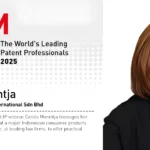By Sajjaratul Yaqeen
As a business owner, you may encounter copycats who create a trademark that bears a striking resemblance to your own registered trademark. When faced with such situations, what do you do? What action can you take?
Well, the answers to these questions can be found in a recent Intellectual Property Office of Singapore (IPOS) trademark opposition case between BEABA and Biba (Zhejiang) Nursing Products Co., Ltd [2022] SGIPOS 5.
Key Takeaways
- BEABA Opposed Biba’s Trademark Application in Singapore – The French company BEABA filed a successful opposition against Biba (Zhejiang) for attempting to register a similar trademark in Singapore.
- High Degree of Similarity Between the Marks – The Registrar found strong visual, aural, and conceptual similarity between “BEABA” and “Biba,” especially as “BEABA” is a highly distinctive invented word.
- Passing Off Was Established for Class 05 Goods – BEABA proved goodwill, misrepresentation, and potential damage regarding diapers (Class 05), but not for Class 16 goods.
- Application Filed in Bad Faith and Infringed Copyright – The Applicant failed to justify their mark’s origin, suggesting dishonest intent, and was also found to have copied BEABA’s stylized copyrighted mark
- Opponent’s Trademark Recognized as Well-Known in Singapore – With 11 years of active use and promotion, BEABA’s brand was deemed well-known, strengthening its protection under trademark law.
Protect Your Brand Today.
.Background
A trademark opposition is a legal process that takes place at the Trademark Office that permits you to object to any third party’s application before it is granted registration.
Established in 1989, French company BEABA (“The Opponent”) initiated an opposition proceeding against Biba (Zhejiang) Nursing Products Co., Ltd (“The Applicant”), a company incorporated in China. The Opponent’s products have been available in Singapore since 2009, whereas the Applicant’s products have been available in Singapore since 2020.
For ease of reference, the marks in disputes are:
TRADEMARK | APPLICATION NO. | CLASS | GOODS | ACTUAL USE OF THE MARK |
Applicant’s mark: | 40201909817Y | 05 | Lacteal flour for babies; food for babies; nutritional supplements; infant formula; powdered milk for babies; sanitary towels; diapers for incontinence; babies’ diaper-pants; adult diapers; diapers for pets; linseed oil dietary supplements; medicines for human purposes; porcelain for dental prostheses; veterinary preparations; panty liners [sanitary]; insecticidal animal shampoos; adjuvants for medical purposes; cotton for medical purposes; drugs for medical purposes; pants, absorbent, for incontinence. | |
40201909820Q | 16 | Paper; towels of paper; advertisement boards of paper or cardboard; notebooks; magazines [periodicals]; pictures; wrapping paper; stationery; stamps [seals]; steel pens; writing instruments; writing or drawing books; page holders; books; pads [stationery]; envelopes [stationery]; printing blocks; drawing rulers; envelope sealing machines for offices; toilet paper. | ||
Opponent’s mark: BEABA |
40201401833P |
07 | Electromechanical kitchen apparatus; electromechanical food preparation machines; food mixers; electric food blenders; electric fruit presses for household use; electric food processors. | |
09 | Weighing apparatus and instruments (scales and food scales); thermometers not for medical use; sunglasses; electric visual and/or sound monitoring apparatus; covers for electric outlets; safety harnesses for children (other than for vehicle seats or sports equipment); nets for protection against accidents; light dimmers (regulators). | |||
10 | Surgical, medical, dental and veterinary apparatus and instruments; apparatus and instruments for the treatment of babies; apparatus and instruments for babies namely, feeding bottles, incubators and teats; feeding bottles; feeding bottle teats; feeding bottle valves; babies’ pacifiers [teats]; thermometers for medical use; teething rings. | |||
11 | Apparatus for heating, steam generating, cooking, refrigerating, drying, ventilating; apparatus and utensils for heating and cooking by electricity; plate warmers; stoves; electric feeding bottle warmers; electric baby food jar warmers; electric apparatus for heat conditioning; sterilizers for bottles and breastfeeding equipment; lighting apparatus; nightlights. | |||
20 | Furniture; mirrors; display frames and mirror frames; baby changing tables; seats for children; booster seats for children for feeding (furniture), not for use in vehicles; high chairs for children; baby bouncers; infant walkers; cradles; umbrella beds (furniture); playpens for babies; mats for infant playpens; toy chests; baskets of wicker; hooks, not of metal, for clothes rails; clothes hangers and covers; mobiles for decoration; cushions; packaging containers of plastic. | |||
21 | Non-electric household or kitchen utensils and containers (neither of precious metal, nor coated therewith); non-electric cooking utensils; table plates; glasses; bowls; cups; egg cups; non-electric feeding bottle warmers; baby food jar warmers (non-electric); refrigerating containers (not electric or gas powered); insulated containers, bags, small bags and pouches for food or beverages, for household use; microwave containers; feeding bottle drainers; hand-held shakers; brushes for cleaning feeding bottles; combs, sponges and brushes (except paint brushes); articles for cleaning purposes; potties for babies; portable baby baths; trash cans; babies’ diaper disposal bins; toilet cases; hair brushes; toilet sponges, toothbrushes; flasks; perfume vaporizers; soap boxes; cotton bud boxes for household use; powder boxes |
The main issues considered by the IPOS Registrar (“The Registrar”) in deciding the Opponent’s opposition are as follows:
Similarity between the Applicant’s and Opponent’s mark
The Registrar assessed the marks for similarity by comparing three aspects: visual, aural, and conceptual similarities.
(a) Visually: The marks consist of identical letters arranged in the same sequence. Although the fonts differ, the Opponent’s Mark is registered in plain block capitals, which confers protection onto the word itself, regardless of font or design. Thus, the marks exhibit a very high degree of similarity.
(b) Aurally: Identical as the marks have identical spelling.
(c) Conceptually: Difference in font is irrelevant as the Applicant’s mark would evoke the same concept as the Opponent’s Mark, rendering them identical.
The Registrar also regarded that the Opponent’s mark, being an invented word, possesses a high degree of technical distinctiveness. In conclusion, the marks exhibit a high degree of similarity between them.
Similarity between the Applicant’s and Opponent’s goods
The Registrar followed the following guidelines (disjunctive) in assessing the similarity of goods:
- the respective uses of the respective goods or services;
- the respective users of the respective goods or services;
- the physical nature of the goods or acts of service;
- the respective trade channels through which the goods or services reach the market;
- the likelihood of respective goods to be found in supermarkets and in particular whether they are, or are likely to be, found on the same or different shelves; and
- the extent to which the respective goods or services are competitive.
Based on the above, the Registrar concluded that that there is goods-similarity between the Applicant’s goods in Class 05 (diapers) and the Opponent’s goods in Class 21 (potties). However, this was not applicable for the Applicant’s goods in Class 16.
Passing Off
Passing off protects a business by preventing the unauthorized use of a trademark which is similar to another’s trademark. The three elements of passing off are (a) goodwill, (b) misrepresentation, and (c) damage to goodwill.
(a) Goodwill: There is no dispute that the Opponent has acquired goodwill in its business in Singapore.
(b) Misrepresentation: The Registrar referred to the conclusion regarding the similarity between the Applicant’s and Opponent’s goods and decided that there would only be a likelihood of misrepresentation in Class 05 but not in Class 16.
(c) Damage to Goodwill: The Registrar viewed that there could be damage to the Opponent’s sales of the goods due to the likelihood of misrepresentation in Class 05.
The Opponent succeeded in all three elements of passing off for Class 05 but not for Class 16.
Is the Opponent’s mark well-known in Singapore?
Based on the evidence of use provided by the Opponent, the Registrar ruled that the Opponent’s mark is well known in Singapore as the Opponent’s brand has been extensively used and promoted for a period of 11 years prior to the date of application of the Application Mark. Its products are also available in both physical and online stores in Singapore.
Bad Faith
Another vital trademark criterion is that a trademark application should not be made in bad faith. To prove this, the opponent will usually need to show that the applicant’s conduct fell below the acceptable standards of commercial behaviour.
The Registrar held that the Applicant’s mark was made in bad faith as they failed to furnish a credible explanation of how their mark was derived. This indirectly implies that the Applicant had dishonest intentions to take advantage of the Opponent’s established reputation, without the Opponent’s consent.
Copyright Infringement
The Opponent also objected to the Applicant’s mark on the basis that it is identical to the Opponent’s Stylized Mark, in which copyright subsists.
Copyright grants the creator of an original literary or artistic work exclusive rights in utilising, reproducing, or commercialising their work. The following must be established by the Opponent to prove there is copyright infringement:
(i) subsistence and ownership of the copyright;
(ii) the Applicant’s mark consists of a substantial part of the copyrighted work.
The Registrar viewed that the visual appearance and stylization of the mark used by the Applicant closely resembled the Opponent’s Stylized Mark, and therefore concluded that the Opponent had substantially copied the Applicant’s mark.
Conclusion
The Opponent’s opposition succeeded on the following grounds:
(a) the Applicant’s mark is similar to the Opponent’s mark;
(b) passing off is established;
(c) the Applicant’s mark was created in bad faith (in Class 05);
(d) the Applicant infringed the Opponent’s copyright
In a nutshell, business owners should practice caution prior to any brand or design adaptation. It is advisable for businesses to exercise proper due diligence to avoid further turmoil which can be detrimental to their business in the long run.
It is also important to note that any person who uses the composite mark, word mark or distinctive feature with a different word in the design can be considered to be infringing upon the mark. Registration of the 3 versions of the marks can be done altogether, or separately should there be financial constraints.
Notes:
- In a trademark opposition case (against a registered trademark or a pending application), the Registrar of Trademarks does not have the authority to grant any injunctions or restraining order against the applicant of the trademark in question. Application for an injunction must be made to the court with appropriate jurisdiction.
- Copyright protection does not apply to a simple word but to a stylized presentation of the word, if it is original in nature. Thus, if a word is used as trademark, it is advisable to register the word as well as the stylized version of the word as a trademark, and to register the stylized version as a copyright in countries where registration of copyright is required by law.
- To obtain strong and broad protection for a composite mark, it is advisable to register the different distinctive features of the composite mark separately, namely;
i) The composite mark
ii) The word as used in the composite mark
iii) The distinctive feature (composite mark without the word)
For example:
Type of Trademark | Examples |
i) Composite Mark |  |
ii) Word Mark | HORSE |
iii) Distinctive feature (composite mark without the word) |  |
If you would like to learn more about how best to use and protect your trademark, drop us a line at hello@kass.asia!








